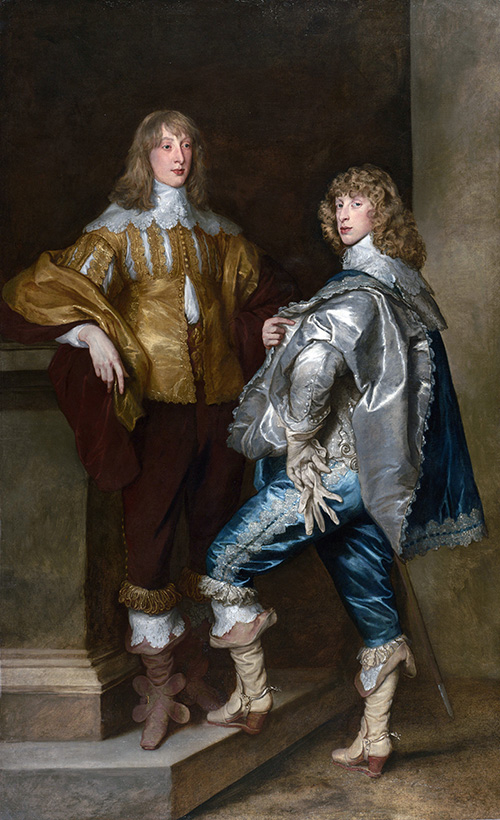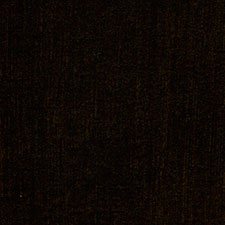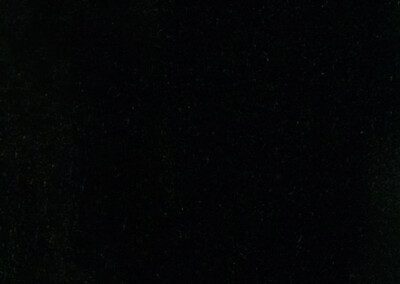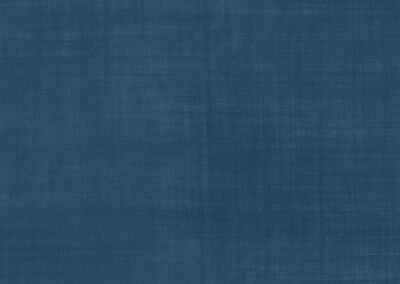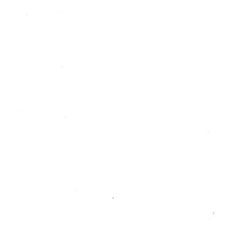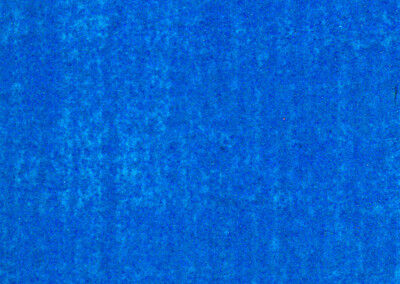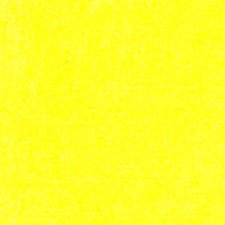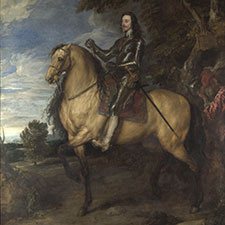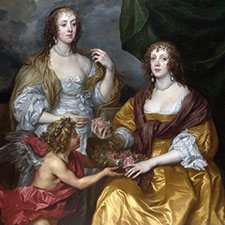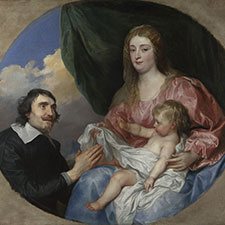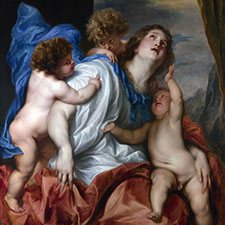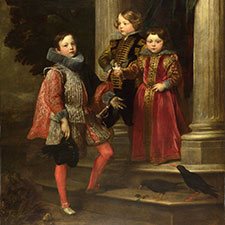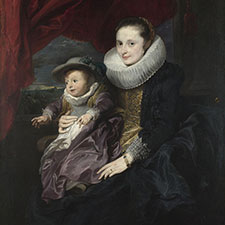Anthony van Dyck, Lord John Stuart and his Brother, Lord Bernard Stuart
ca 1638Paintings sorted by Historical period | Painter | Subject matter | Pigments used
Overview
Medium: Oil
Support: Canvas
Size: 237.5 x 146.1 cm
Art period: Baroque
A late portrait of the two sons of the 3rd Duke of Lennox. The two figures are prominently placed and worked out in considerable detail, while the background is left sketchy and gives an unfinished impression.
The pigment analysis casts light on the elaborate handling of painting materials in the costumes of both young men. Lord Bernard’s blue satin dress is painted in several layers of indigo, lead white and azurite to achieve the rich sheen of the fabric.
Pigments
Pigment Analysis
This pigment analysis is based on the work of the scientists at the National Gallery London (1). The scientists employed x-ray radiography (XRR), energy dispersive x-ray spectroscopy (EDX), and x-ray diffraction (XRD) to gain insights into the inner layers of the painting and to identify the pigments.

1 Lord Bernard’s blue satin dress: undermodelling is done in indigo in the shadows and indigo and lead white in the mid-tones. The surface was then scumbled (applying a very thin opaque layer of paint so that the underlying colour is still partly visible) with azurite and azurite mixed with indigo. Van Dyck used this technique also for the background curtain in his ‘The Balbi Children‘.
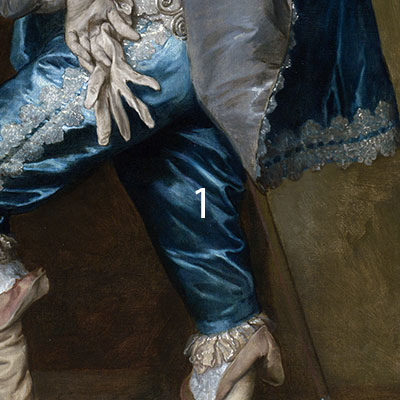
2 Lord John’s golden and brown costume: pure lead-tin yellow in the highlights and lead-tin yellow with yellow ochre, lead white and some red ochre in the mid-tones. The shadows are painted in reddish ochre with Vandyke brown and some yellow ochre and also bister or bistre (pitch-like product of heating (pyrolysis) of wood).
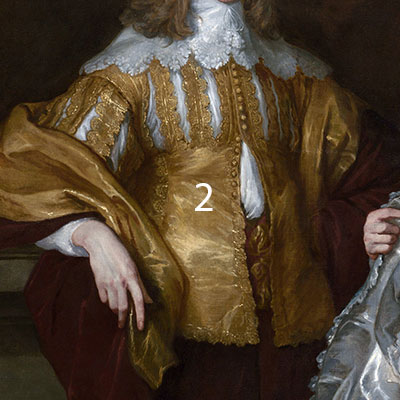
3 Grey and brown tones of the architectural setting: single thinly painted layers of white with varying proportions of ochres and black.
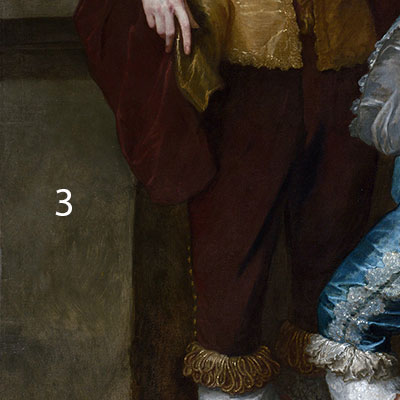
References
(1) Ashok Roy, The National Gallery’s Van Dycks: Technique and Development, National Gallery Technical Bulletin, Volume 20, 1999, pp. 80-81. Available as pdf.
Pigments Used in This Painting
Resources
See the collection of online and offline resources such as books, articles, videos, and websites on Anthony van Dyck in the section ‘Resources on Painters‘

